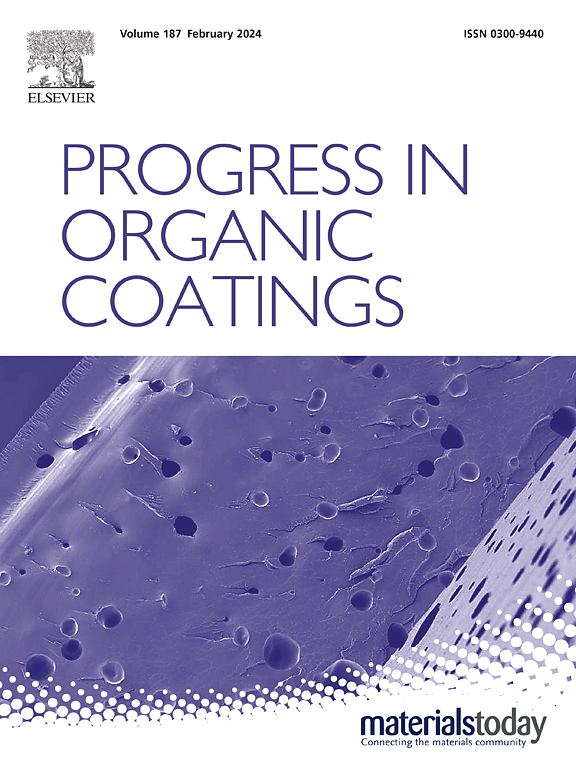Hollow ceramic microbeads-SiO2/polydimethylsiloxane radiative cooling coating with self-cleaning effect and thermal insulation capability
IF 6.5
2区 材料科学
Q1 CHEMISTRY, APPLIED
引用次数: 0
Abstract
Zero-energy radiative cooling (RC) coatings are important for reducing building energy consumption and minimizing carbon emissions. Future high-performance green buildings will require building envelope coatings with multiple functions, such as RC, self-cleaning, and thermal insulation. However, the existing RC coatings for buildings usually have only a single function or two of them. Hollow ceramic microbeads-SiO2/polydimethylsiloxane (HCMs/PDMS) hybrid coatings were proposed to address the shortcomings of the RC coatings. The solar reflectance and infrared emissivity of the HCMs/PDMS coating were 92.4 % and 93.0 %, respectively. Under direct sunlight, the HCMs/PDMS coating achieved subambient RC effects of 11.1 °C and 4.81 °C in summer and winter, respectively. In addition, the HCMs/PDMS RC coating surface has a self-cleaning function (contact angle of 156° and a rolling angle of 7.2°), which improves the ability of the coating surface to prevent dust accumulation and thus improves the durability of the coating's RC performance. In particular, the HCMs/PDMS coating exhibits stronger adhesion to the building substrate than existing hollow glass microbeads (HGM) based coatings. Moreover, the HCMs/PDMS coating has an extremely low thermal conductivity (0.13 W·m−1·K−1), which blocks the diffusion of heat from the hot outdoors to the cool indoors in the summer and from the warm indoors to the cold outdoors in the winter and contributes to the reduction of a building's total year-round energy consumption by further restricting the heat exchanges between indoors and outdoors. The results of building energy simulations demonstrated that the use of HCMs/PDMS coatings in typical large cities around the world resulted in year-round building energy efficiency of more than 8 % in more than 66 % of the 18 typical cities. The multifunctional HCMs/PDMS RC coating developed in this work provides a new idea for the design of future high-performance green building coating materials.
求助全文
约1分钟内获得全文
求助全文
来源期刊

Progress in Organic Coatings
工程技术-材料科学:膜
CiteScore
11.40
自引率
15.20%
发文量
577
审稿时长
48 days
期刊介绍:
The aim of this international journal is to analyse and publicise the progress and current state of knowledge in the field of organic coatings and related materials. The Editors and the Editorial Board members will solicit both review and research papers from academic and industrial scientists who are actively engaged in research and development or, in the case of review papers, have extensive experience in the subject to be reviewed. Unsolicited manuscripts will be accepted if they meet the journal''s requirements. The journal publishes papers dealing with such subjects as:
• Chemical, physical and technological properties of organic coatings and related materials
• Problems and methods of preparation, manufacture and application of these materials
• Performance, testing and analysis.
 求助内容:
求助内容: 应助结果提醒方式:
应助结果提醒方式:


